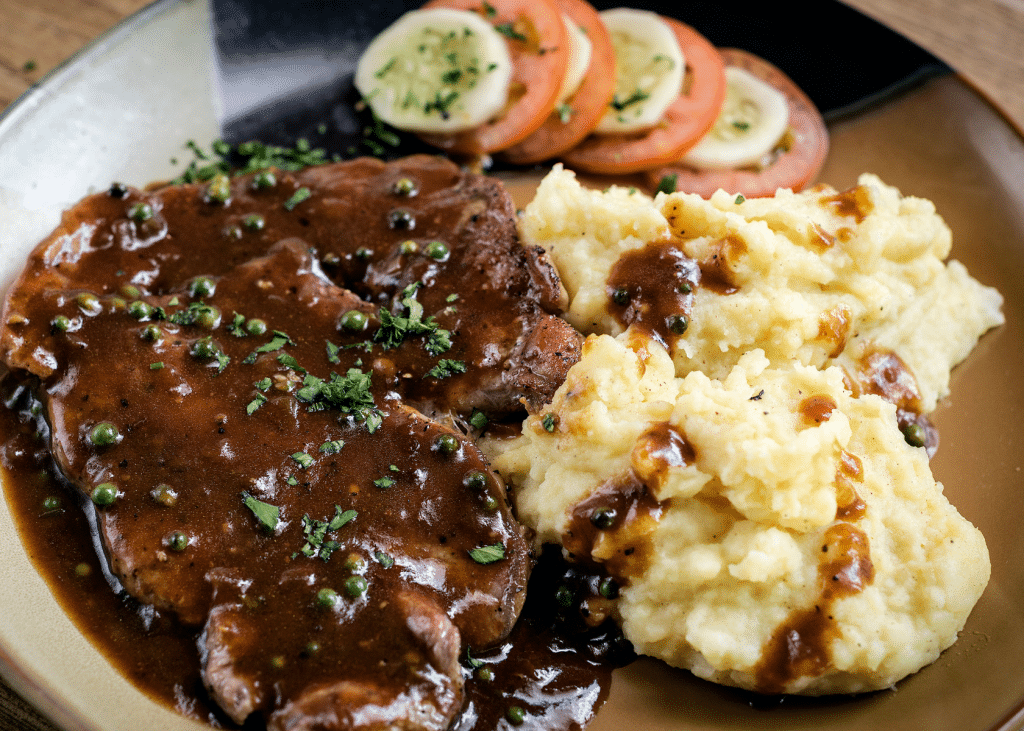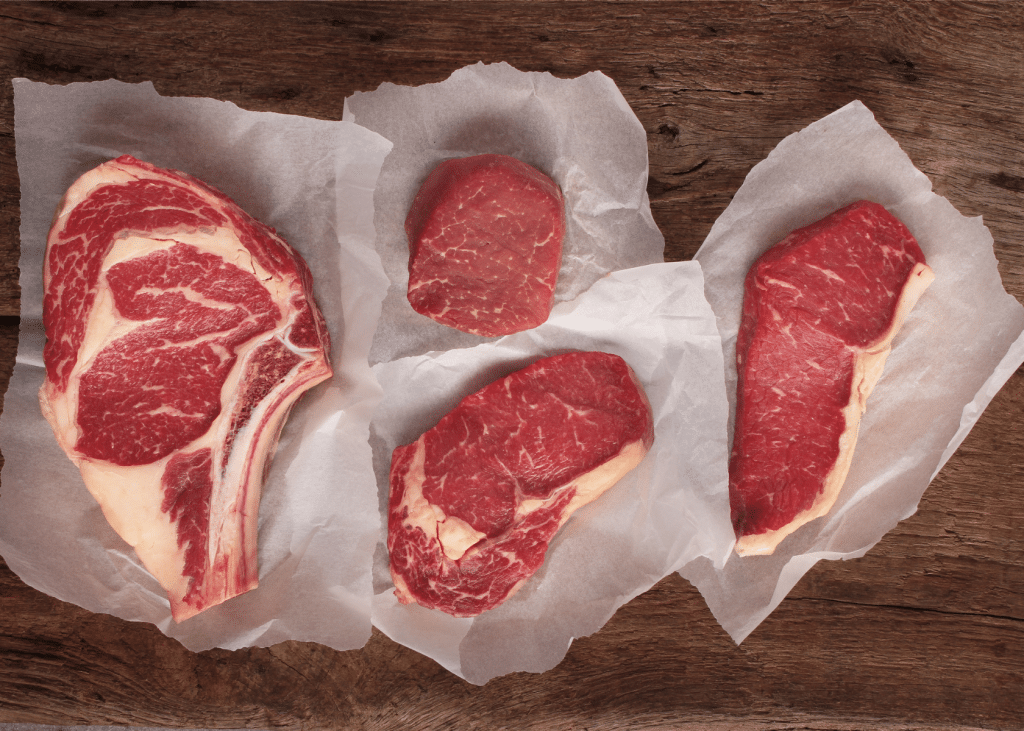Steak has been a treat enjoyed by steak lovers for generations. While the quality of the meat is important for its taste, using seasonings can take a steak to new heights. The real question is, what are the best seasonings for steak?
Whether you’re experienced in grilling. Just starting out in the world of steak cooking, this detailed guide will reveal how to bring out the flavor potential of your steak.
Seasoning a steak isn’t about adding salt and pepper; it’s a tradition that can turn a simple piece of meat into an exceptional dish. Each seasoning blend adds its own touch, enhancing the natural flavors of the steak and improving its overall taste. Proper seasoning not only enhances depth and complexity but also helps create a delicious crust that locks in juices, ensuring every bite is tender and flavorful.
The Classic: Salt and Pepper
No guide to seasoning steaks would be complete without mentioning the combination of salt and pepper. These simple ingredients have stood the test of time because they provide a base for layering flavors.
Coarse sea salt, or Kosher salt, is often preferred for its crystals, as they stick better to the steak’s surface and provide a crunch when seared. Ground black pepper brings warmth and earthy notes that complement the richness of the meat.
The timing of seasoning with salt and pepper is crucial. Some chefs suggest seasoning the steak up to an hour before cooking to allow the salt to infuse into the meat and enhance its flavors. Others opt for seasoning before cooking to ensure a salty taste on the exterior.
In the end, it all comes down to preference. One thing remains certain; a well-seasoned steak with salt and pepper is a timeless favorite that never fails to impress.
Herb-Infused Butter and Oils
For those looking to elevate their flavor experience when deciding on seasonings, steak herb-infused butter and oils open up a world of possibilities. These aromatic additions not only bring flavors but also add richness and moisture to the steak.
Begin by choosing your herbs, like rosemary, thyme, garlic, or parsley. Finely. Blend these herbs with butter or top-notch olive oil to create a lively and fragrant compound.
Before you cook the steak, make sure to cover it with a mixture infused with herbs. This will help the flavors seep into the meat as it cooks.
Another option is to whip up herb butter by combining butter with finely chopped herbs and a dash of salt. After cooking the steak to your liking, add a dollop of the herb butter on top to let it melt over the surface and infuse its flavors into every bite.
Rubs and Marinades
If you’re looking for a flavor experience, consider using rubs and marinades. These preparations allow the steak to absorb a blend of spices and aromatics, turning it into a taste sensation.
Dry rubs are a choice, featuring combinations of dried herbs, spices, and seasonings. Whether you prefer the flavors of a Southwest-inspired rub or the aromatic hints of a Mediterranean mix, there are possibilities.
Simply pat the rub onto the steak evenly. Let it sit for at least 30 minutes before cooking. This will allow the flavors to penetrate the meat and form a crust during searing. Marinades, however, involve soaking the steak in a mixture of oils, acids (like vinegar or citrus juices), and various herbs and spices. This method does not only add flavor to the meat but also helps to tenderize it. For optimal results, marinate your steak for hours or overnight, rotating it occasionally for even flavor distribution.
Global Inspirations: Exploring International Flavors
The globe is filled with a tapestry of customs, each with its own distinct way of seasoning steak. Embracing these tastes can take your palate on an adventure, enhancing your steak enjoyment to new levels.
Mediterranean Medley
Drawing inspiration from the flavors of the Mediterranean area, a combination of herbs such as oregano, rosemary, thyme, and garlic can create an earthy seasoning for your steak. Pair these herbs with a drizzle of olive oil and a sprinkle of sea salt for a Mediterranean essence in every bite.
Jamaican Jerk
For those craving spicy flavors, explore the Jamaican jerk seasoning. A fusion of allspice, thyme, scotch bonnet peppers, and a touch of cinnamon produces a memorable flavor profile. Massage the seasoning into your steak. Let it soak for a few hours to allow the flavors to seep into the meat completely.
Argentine Chimichurri
Hailing from Argentina, chimichurri sauce is a flavorful partner for grilled meats and steak. This lively mix of parsley, garlic, olive oil, and red wine vinegar brings a burst of taste to your steak. While traditionally used as a sauce, you can also apply the blend as a marinade. Rub your steak, giving it a touch of South American charm.
Japanese Umami Blend
For a spin on seasoning your steak, delve into the realm of umami flavors. A fusion of soy sauce, garlic, and grated ginger can create a savory coating for your steak. Spread this blend over the meat before grilling or pan-searing to achieve a crust with the depth of flavor of Japanese cuisine.
Beyond Seasoning: Accompaniments and Sauces
While seasoning sets the stage for flavor, sides, and condiments can elevate your steak experience to new levels. These tasty additions not only enhance the seasoning but also offer a contrasting or complementary flavor profile, creating a harmonious blend on your plate.
Compound Butters
Enhanced butter is a way to elevate the taste of your seasoned steak. Combine softened butter with your ingredients, like herbs, garlic, citrus zest, or even blue cheese, to create a topping that melts onto the steak, imparting it with decadent and rich flavors.
Steak Sauces
From the béarnaise to the chimichurri steak, condiments open up a world of flavor options. Experiment with recipes such as a wine reduction, peppercorn sauce, or creamy mushroom sauce to discover the ideal companion for your seasoned steak. These condiments can be drizzled over the steak. Served on the side for dipping purposes, allowing you to tailor the flavor intensity in every bite.
Compound Mustards
For those who enjoy a bit of spice-enhanced mustard, make a pairing for steaks. Combine your mustard with ingredients like herbs, honey, or even beer, for a flavorful sauce. Spread a layer of mustard on your steak before cooking, or serve it alongside it for dipping.
Flavored Salts and Spice Blends
Do not overlook the impact of flavored salts and seasoning mixes. These versatile seasonings can add a dimension of taste complexity to your steak.
From flavored salts to lemon pepper mixes, these tasty additions can be sprinkled onto the steak before or after cooking, giving you the freedom to customize the seasoning according to your taste preferences.
Cooking Methods and Seasoning Considerations
The method you choose to cook your steak can impact how you season it. Different cooking methods may require adjustments in when or how seasoning is applied to achieve the desired taste. Let’s explore which seasonings work best for each cooking method.
Grilling and Searing
For seared steaks, it’s important to coat the surface of the meat with seasoning before cooking. The intense heat will form a crust, locking in flavors and ensuring a burst of seasoning in every mouthful. If using a rub or marinade, make sure to pat the steak dry before cooking to prevent steaming and encourage searing.
Oven Roasting
When roasting a steak in the oven, consider seasoning it with time. This allows the flavors to penetrate deeply into the meat, infusing it with taste from within. You can also brush the steak with herb-infused butter or oil midway through cooking, for an added touch of flavor and moisture.
Sous Vide
When it comes to the sous vide technique of cooking steak, in a controlled water bath, there’s a choice to be made about seasoning. Some chefs prefer seasoning the steak before cooking, while others opt for seasoning after the sous vide process to ensure the flavors stay intact. It’s worth trying out both methods to see which one suits your taste best.
Reverse Searing
Another method to consider is searing, where the steak is initially cooked at a certain temperature and then seared at high heat. This approach allows for a controlled method of seasoning. Seasoning the steak before the cooking phase and adding seasoning before searing ensures an even distribution of flavors and a tasty crust.
Seasoning Steaks of Different Cuts
In seasoning, the choice of steak cut also plays a role in how you season it. Different cuts vary in tenderness, fat content, and flavor intensity, influencing how they should be seasoned.
Tender Cuts: Filet Mignon, Tenderloin
Filet mignon and tenderloin are examples of tender cuts known for their texture and mild taste. It’s recommended to go on the seasoning with these cuts, as overpowering flavors can mask their subtlety.
Enhancing the flavors of your steak with a mix of salt, pepper, and a hint of herb butter or compound butter can truly elevate its taste.
Flavorful Cuts: Ribeye, Strip Steak
For cuts like ribeye and strip steak, known for their flavors and higher fat content, opt for bold seasoning blends like dry rubs or marinades to enhance their natural richness. Spices such as powder, smoked paprika, or cumin can complement the beefiness of these cuts.
Tougher Cuts: Flank Steak, Skirt Steak
On the other hand, tougher cuts such as flank steak and skirt steak benefit from marinades or tenderizing rubs that not only add flavor but also help tenderize the meat by breaking down muscle fibers. Consider using marinades with ingredients like juices, vinegar, or wine along with herbs and spices to infuse a depth of flavor into the meat.
Conclusion
In conclusion, while this guide offers insights, on seasoning steaks, the real joy comes from experimenting with seasonings to create unique blends that cater to your personal taste preferences.
When you start out, try mixing herbs and spices to see which flavors you enjoy the most. You might prefer the warmth of cumin and chili powder or the freshness of lemon zest and rosemary. Alternatively, you could be drawn to the tastes of garlic and smoked paprika.
Experiment with ways of cooking well, as they can affect how seasonings are absorbed and showcased in the final dish. A seasoning mix that works perfectly on a grilled steak might have a taste when roasted in the oven or cooked sous vide.
Keep in mind that seasoning is an art that requires practice and a willingness to experiment. If your initial attempts don’t turn out as expected, don’t get disheartened. Keep tasting, adjusting, and honing your seasoning skills until you discover the blend that excites your palate and elevates your steak into a culinary delight.



